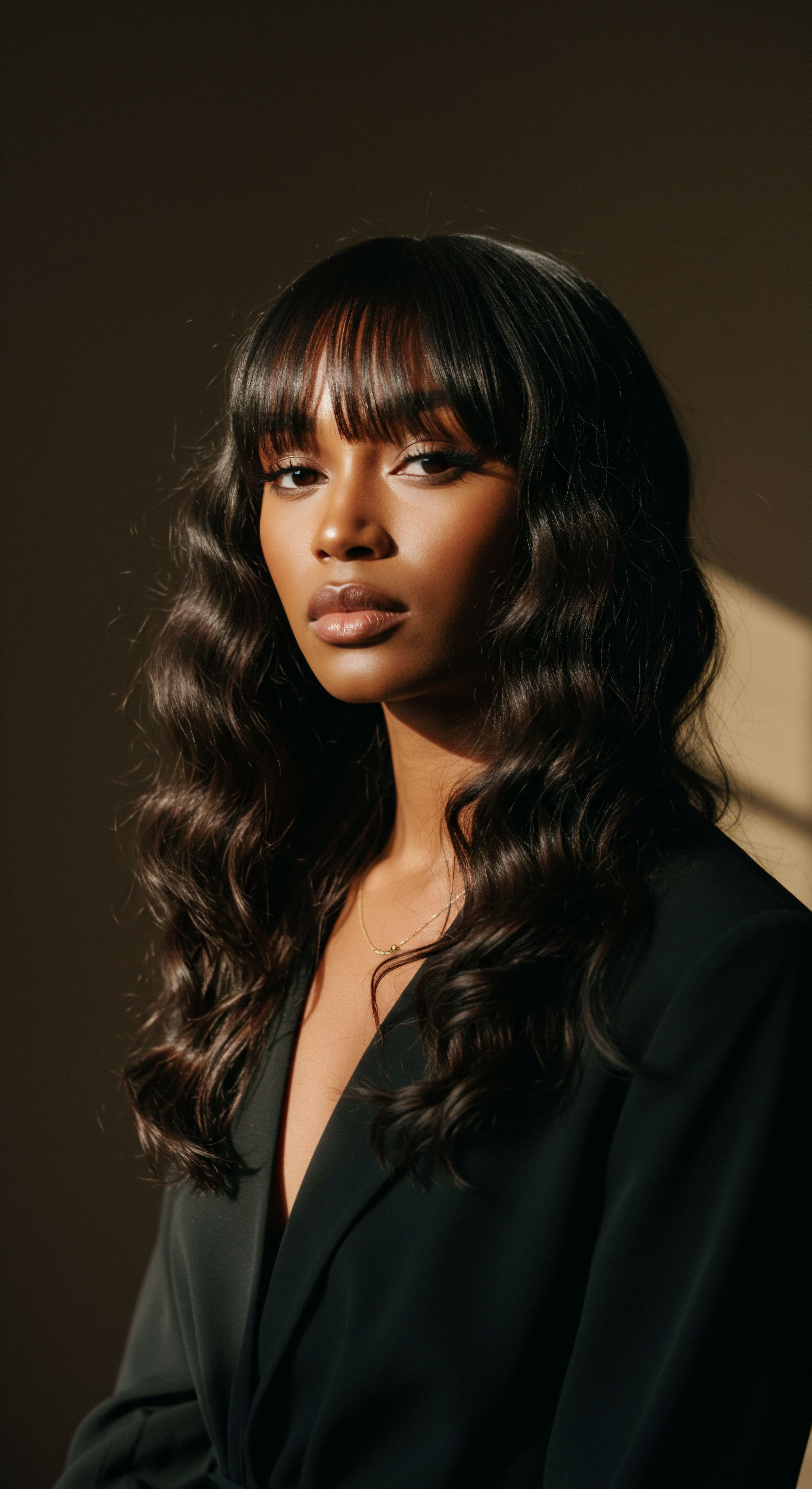
Roots
The journey to understanding our textured hair often begins with a quiet contemplation of its very essence, a wondering about the unseen forces that shape each coil and wave. We feel the spring, the bounce, the way light plays differently across its surface, and intuitively know there is more to this than meets the eye. Beneath the visible splendor of a curl lies a complex, cellular architecture, a hidden world where the story of its unique character truly unfolds.
It is within these foundational structures, nestled deep within the scalp, that the initial whispers of curl begin, a testament to nature’s intricate design. To truly care for our textured hair, to nurture its vitality, we must first descend to this microscopic level, seeking clarity on the building blocks that determine its magnificent form.

Hair Anatomy and Physiology Specific to Textured Hair
At its core, every strand of hair, regardless of its external appearance, emerges from a hair follicle, a tiny organ situated within the skin. For textured hair, this follicle possesses a distinctive, asymmetrical shape, often described as elliptical or even ribbon-like, rather than the perfectly round configuration associated with straight hair. This non-circular cross-section of the follicle dictates the initial trajectory of the growing hair shaft, setting the stage for its eventual curvature. Think of it as a sculptor’s mold ❉ the shape of the mold determines the shape of the clay that emerges.
A curved mold yields a curved output. The deeper within the dermis, the hair bulb, the base of the follicle, also exhibits a slight hook in curly hair, further influencing the path of growth. This intrinsic curvature means that even at its nascent stage, a textured strand is predisposed to its characteristic spiral.
Beyond the follicle’s shape, the cellular activity within plays a significant role. The hair matrix, a region of rapidly dividing cells within the hair bulb, produces the cells that form the hair shaft. In textured hair, the division and subsequent arrangement of these cells, particularly the cortical cells, occur in an uneven, asymmetrical manner. This differential growth and distribution of cells along the hair shaft contribute directly to the strand’s tendency to bend and coil.
The initial curvature of a textured hair strand is predetermined by the unique, asymmetrical shape of its follicle and the uneven cellular processes occurring within.

Textured Hair Classification Systems
The desire to categorize and understand textured hair has given rise to various classification systems. While the most widely recognized, the Andre Walker Hair Typing System, categorizes hair into types 1 through 4 (straight, wavy, curly, and coily, respectively), with further sub-classifications (A, B, C), it is important to acknowledge that these systems are observational and often do not capture the full spectrum of diversity within textured hair. They serve as a general guide, helping individuals identify broad patterns and select appropriate care, yet they do not fully reflect the complex biological underpinnings of curl. For instance, the system has received criticism for a perceived preference for looser curl patterns, sometimes overlooking the unique characteristics of tighter coils.
Other classifications exist, some focusing on strand thickness (fine, medium, coarse) or porosity (low, normal, high), offering a more granular understanding of a hair’s specific needs. These systems, while practical for daily care, are outward manifestations of the deeper internal structures and genetic predispositions that truly define a curl. The conversation around hair typing continues to evolve, with researchers seeking more objective, science-backed methods that account for the vast variability within and between genetically distinct groups.

The Essential Lexicon of Textured Hair
To truly comprehend the science of textured hair, a shared vocabulary becomes indispensable. We speak of the Cuticle, the outermost protective layer composed of overlapping, scale-like cells. In textured hair, these scales can sometimes be slightly lifted at the curves of the strand, making it more prone to moisture loss and potential damage. The Cortex, the central and most substantial part of the hair shaft, provides much of its mechanical strength and elasticity.
This is where the magic of curl truly resides, with its unique distribution of proteins. Some hair strands also possess a Medulla, a central core, though its presence and role vary.
- Keratin ❉ The primary protein that forms the hair shaft, a fibrous structural unit.
- Disulfide Bonds ❉ Strong chemical bonds between sulfur atoms in keratin proteins, crucial for maintaining the hair’s permanent shape.
- Hydrogen Bonds ❉ Weaker, temporary bonds that are influenced by water and humidity, impacting the hair’s temporary shape and frizz.
- Cortical Cells ❉ Spindle-shaped cells within the cortex, whose arrangement and type influence the hair’s curvature.

Hair Growth Cycles and Influencing Factors
Hair growth occurs in a cyclical pattern, comprising three main phases ❉ anagen (growth), catagen (transition), and telogen (resting). While these cycles are universal, their duration and characteristics can be influenced by various factors, including genetics, nutrition, and overall health. The continuous production of hair cells within the follicle, driven by these cycles, ensures a constant renewal of our strands. The intricate dance of cell division and differentiation within the follicle is fundamental to the formation of a curl, with any disruptions potentially influencing the hair’s texture.
Beyond the inherent biological rhythm, external and internal elements can subtly influence hair’s growth and appearance. Nutritional deficiencies, stress, and certain chemical exposures may induce epigenetic changes, affecting how genes related to hair growth are expressed. This means that while our genetic blueprint sets the initial stage for curl, environmental factors can subtly adjust the performance, highlighting the dynamic interplay between nature and nurture in the story of our hair.

Ritual
Stepping from the foundational knowledge of our hair’s inner workings, we arrive at the daily and periodic practices that shape our textured hair experience. This is where understanding meets application, where the quiet wisdom gleaned from anatomy transforms into the gentle touch of a well-chosen technique or the thoughtful selection of a product. It is in these rituals that we honor the unique design of our curls, recognizing that their internal architecture calls for specific approaches to thrive. This section offers guidance, a hand extended in shared understanding, to navigate the world of textured hair styling and care with intention and efficacy.

Protective Styling Encyclopedia
Protective styles serve as a sanctuary for textured hair, shielding it from environmental aggressors and minimizing daily manipulation. The internal structure of curly and coily strands, with their elliptical cross-sections and potential for lifted cuticles, makes them more susceptible to breakage and dehydration. Protective styles, such as braids, twists, and buns, work by tucking away the delicate ends, reducing friction and mechanical stress. This allows the hair to retain moisture more effectively and lessens the strain on the hair shaft, promoting length retention.
Consider the mechanics ❉ each bend in a curly strand represents a point of potential weakness. By securing the hair in a coiled or braided configuration, we reduce the individual strand’s exposure and the constant stretching and pulling that can compromise its structural integrity. This approach aligns with the hair’s inherent need for gentle handling, allowing its internal protein bonds and cellular arrangements to remain undisturbed.
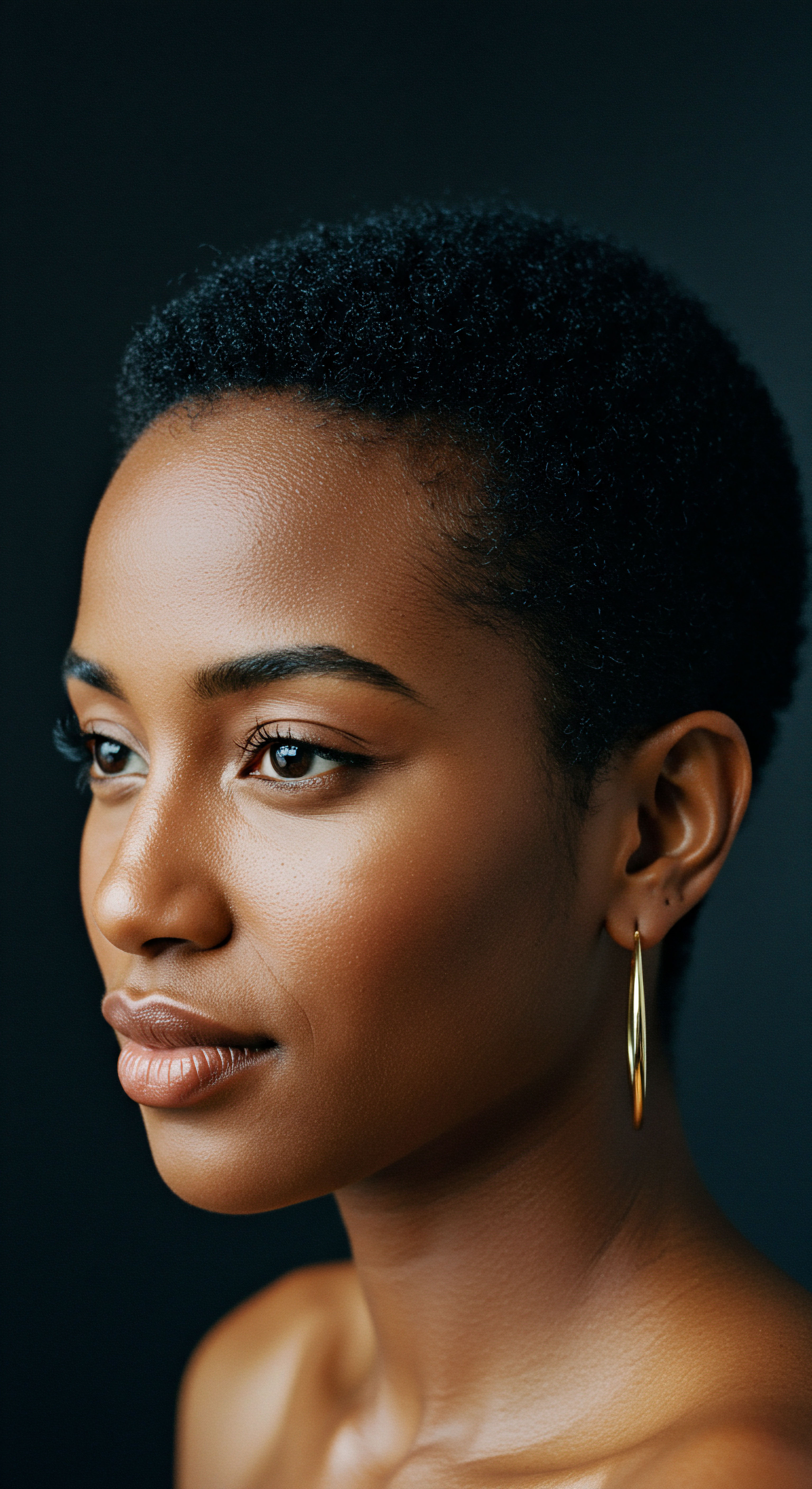
Why Do Protective Styles Promote Length Retention?
Length retention, a cherished goal for many with textured hair, is directly supported by the principles of protective styling. When hair is left loose, it constantly rubs against clothing, absorbs environmental moisture (or loses it), and is subject to repeated manipulation through detangling and styling. Each of these actions can contribute to wear and tear on the hair shaft, particularly at the ends, which are the oldest and most fragile parts of the strand.
By minimizing these external stressors, protective styles allow the hair to grow undisturbed, preserving the integrity of its internal protein matrix and cuticle layers. The reduction in breakage means that more of the hair’s natural growth is retained, leading to visible length over time.

Natural Styling and Definition Techniques
Defining natural curl patterns involves working harmoniously with the hair’s inherent structure. Techniques like wash-and-gos, twist-outs, and braid-outs aim to enhance the existing curl, rather than alter its fundamental form. The success of these methods relies on understanding how water, products, and tension interact with the hair’s internal components.
- Wash-And-Go ❉ This method relies on applying stylers to wet hair to encourage the natural curl pattern to clump and define. The temporary hydrogen bonds within the hair, which are broken when wet, reform as the hair dries, locking the curl into its defined shape.
- Twist-Outs and Braid-Outs ❉ These techniques involve sectioning wet or damp hair, twisting or braiding it, and allowing it to dry completely before unraveling. The physical act of twisting or braiding temporarily realigns the hydrogen bonds and influences the cortical cells to set in a more uniform pattern, resulting in elongated, defined curls or waves. The hair’s natural elasticity, derived from its protein structure, allows it to hold these shapes once dry.
The choice of product plays a pivotal role here. Moisturizing creams and gels provide slip and hold, helping to smooth the cuticle and reduce frizz, which is a common concern for textured hair due to its lifted cuticle layers. Products that offer a balance of hydration and light hold allow the hair to maintain its definition without feeling stiff or crunchy, respecting its delicate nature.
Understanding the internal structures of textured hair guides us toward styling practices that enhance natural curl and minimize potential harm.
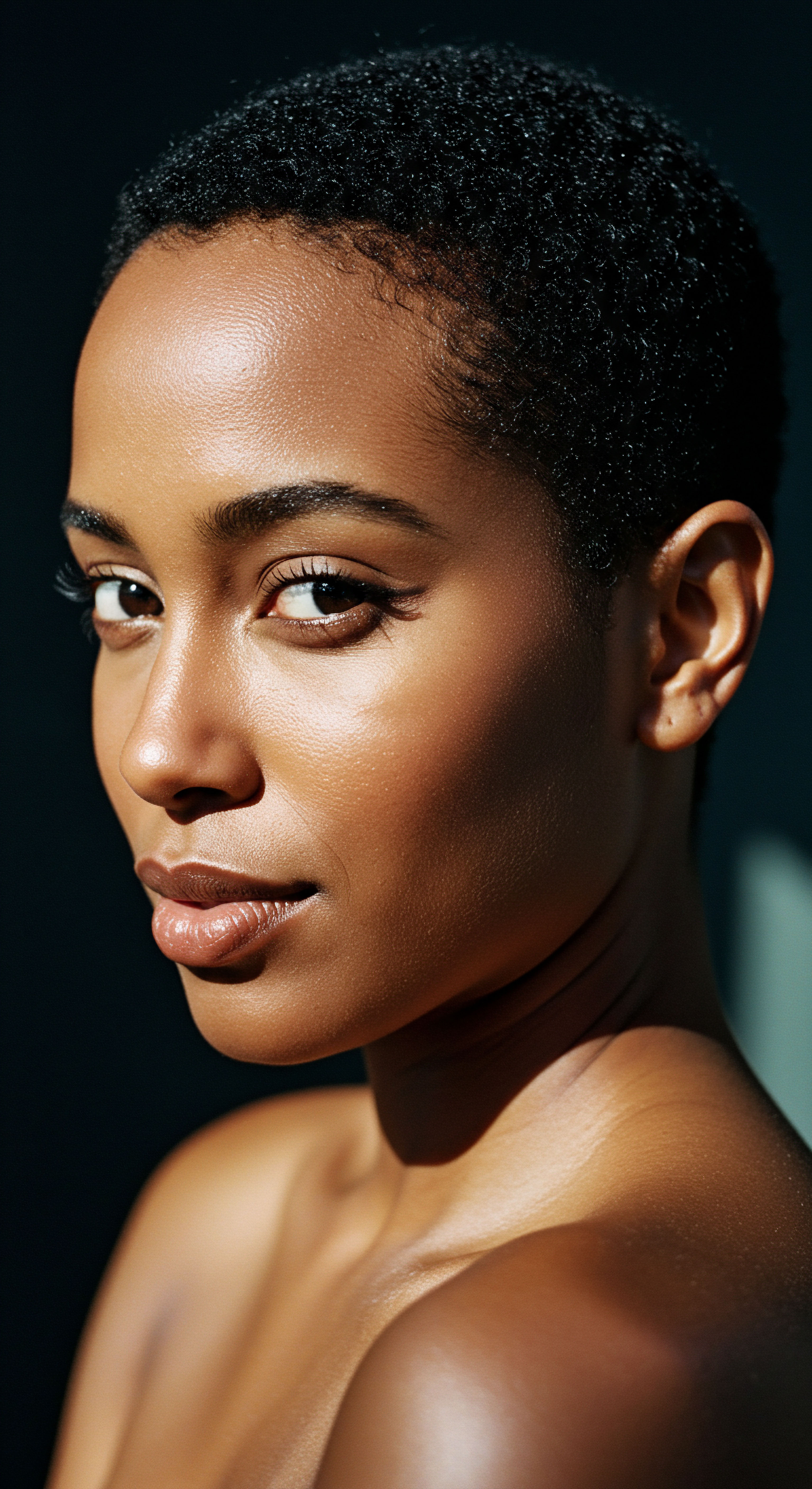
Heat Styling and Thermal Reconditioning
The application of heat to textured hair, whether through blow dryers, flat irons, or curling wands, directly impacts its internal structure, specifically the hydrogen bonds and, in extreme cases, the disulfide bonds. While heat can temporarily straighten or alter curl patterns, it carries the risk of damage if not approached with caution.
When heat is applied, hydrogen bonds within the hair shaft break, allowing the keratin proteins to temporarily re-shape. As the hair cools, these bonds reform in their new configuration. However, excessive heat can lead to permanent damage to the hair’s protein structure, causing dryness, brittleness, and a loss of natural elasticity. This is particularly pertinent for textured hair, which, due to its shape and potentially more exposed cuticle, can be more vulnerable to thermal damage.
Thermal reconditioning, or chemical straightening, involves a more drastic alteration of the hair’s internal bonds. This process chemically breaks and then reforms the stronger disulfide bonds within the hair’s cortex, permanently changing its shape. While offering a long-lasting straight result, this procedure significantly alters the hair’s inherent architecture, requiring meticulous aftercare to maintain its health.
| Bond Type Hydrogen Bonds |
| Effect of Heat Break easily with water and heat, reform upon drying. |
| Permanence of Change Temporary |
| Bond Type Disulfide Bonds |
| Effect of Heat Broken by strong chemicals (e.g. relaxers, perms) or extreme heat; reform in new positions. |
| Permanence of Change Permanent (until new growth or further chemical alteration) |
| Bond Type Understanding these bond behaviors guides safe heat styling practices. |
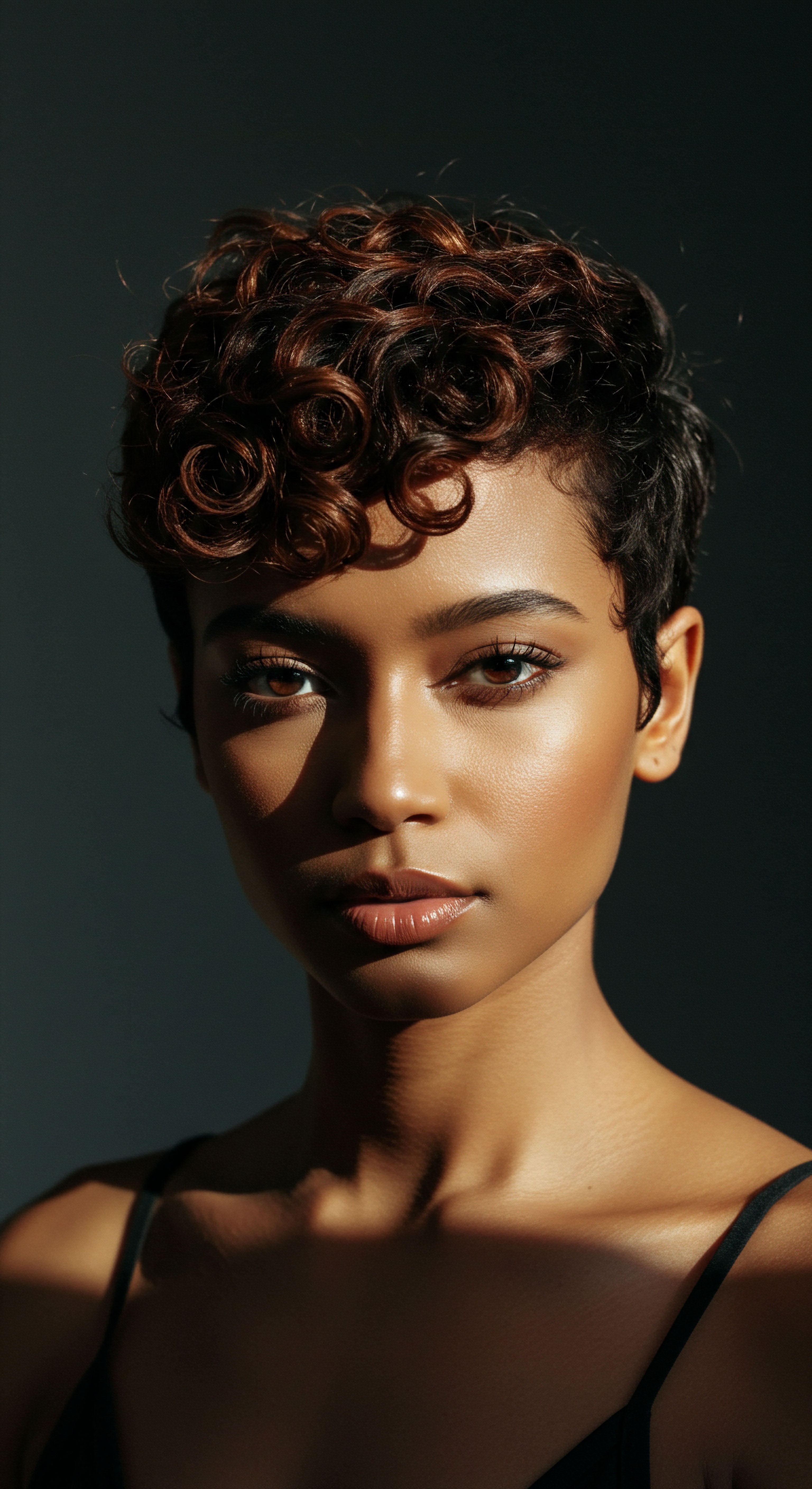
The Complete Textured Hair Toolkit
Equipping oneself with the right tools is an essential part of the textured hair ritual. Each instrument, from a wide-tooth comb to a satin bonnet, serves a specific purpose in supporting the hair’s internal and external health.
- Wide-Tooth Comb ❉ Detangling textured hair, especially when wet and conditioned, with a wide-tooth comb minimizes stress on the hair shaft, reducing breakage. The wider spacing allows curls to remain intact while gently separating strands, preventing excessive pulling on the protein structure.
- Microfiber Towel or Cotton T-Shirt ❉ Traditional terrycloth towels can rough up the cuticle, leading to frizz and potential damage. Using a microfiber towel or an old cotton t-shirt to gently blot excess water helps preserve the cuticle’s smoothness, protecting the inner cortex.
- Satin or Silk Pillowcase/Bonnet ❉ These accessories reduce friction between hair and bedding, preventing tangles, breakage, and moisture loss during sleep. The smooth surface safeguards the cuticle, ensuring the hair’s internal integrity is maintained overnight.
The tools we choose are not merely accessories; they are extensions of our understanding and respect for the unique nature of textured hair. They aid in preserving the delicate balance of its internal structures, allowing each curl to retain its vitality and strength.

Relay
To truly comprehend the nuanced language of a curl, we must venture beyond surface observations, seeking the profound insights where biological intricacies, cultural narratives, and scientific inquiry converge. This section invites a deeper contemplation, a journey into the less apparent complexities that sculpt our hair’s very form. It is here that we bridge the tangible with the theoretical, allowing research and lived experience to illuminate the intricate dance between genetics, cellular behavior, and the captivating spectrum of curl.

The Follicle’s Curved Blueprint
The foundational determinant of curl lies within the hair follicle itself, a tiny organ nestled beneath the scalp. Unlike the straight, cylindrical follicles that produce straight hair, follicles that yield textured strands possess a distinctive, often asymmetrical, curved shape. This curvature is not merely a superficial characteristic; it profoundly influences the growth pattern of the hair shaft.
As the hair cells multiply and keratinize within this curved conduit, they are compressed unevenly, leading to a differential growth rate along the length of the strand. This inherent asymmetry causes the hair to bend and coil as it emerges from the scalp, mirroring the shape of its follicular birthplace.
Consider the analogy of a flexible tube ❉ if the tube itself is curved, anything pushed through it will naturally follow that curve. Similarly, the hair shaft, as it is extruded from a curved follicle, is compelled to adopt a curved path. The degree of this follicular curvature directly correlates with the tightness of the resulting curl.
A slightly oval follicle may produce waves, while a more flattened, S-shaped or even ribbon-like follicle gives rise to tighter coils and kinks. This principle underscores that the external appearance of curl is a direct consequence of the hidden, microscopic architecture of its origin.

How Do Proteins Shape a Strand’s Bends?
Beyond the follicle’s form, the internal composition of the hair shaft, particularly its protein distribution, plays a pivotal role in dictating curl patterns. Hair is primarily composed of keratin, a fibrous protein. In straight hair, keratin is distributed relatively evenly throughout the cortex. However, in textured hair, there is a notable asymmetry in the distribution of keratin proteins and the cortical cells they comprise.
Research suggests that the cortex of curly hair exhibits a bilateral arrangement of different cortical cell types, namely orthocortical (OC) and paracortical (PC) cells. These cells, while similar in their fundamental composition, differ in their packing density and the arrangement of their intermediate filaments. In curly hair, there is often a more pronounced presence of certain cell types on one side of the hair shaft (the concave side of the curl) compared to the other (the convex side). This differential cellular arrangement, with variations in cell length and internal protein organization, creates an internal tension or stress within the hair shaft, causing it to coil.
A compelling illustration of this phenomenon comes from studies on wool fibers, which share structural similarities with human hair. Research has indicated that the intrinsic curvature in wool fibers is determined by the relative length of orthocortical and paracortical cells. The shorter cells on the inside of the curve, analogous to the inner lane of a marching band making a turn, force the longer cells on the outside to bend, thereby creating the curl. This principle, applied to human hair, suggests that minute differences in cell length and distribution within the cortex contribute significantly to the formation and tightness of curls.
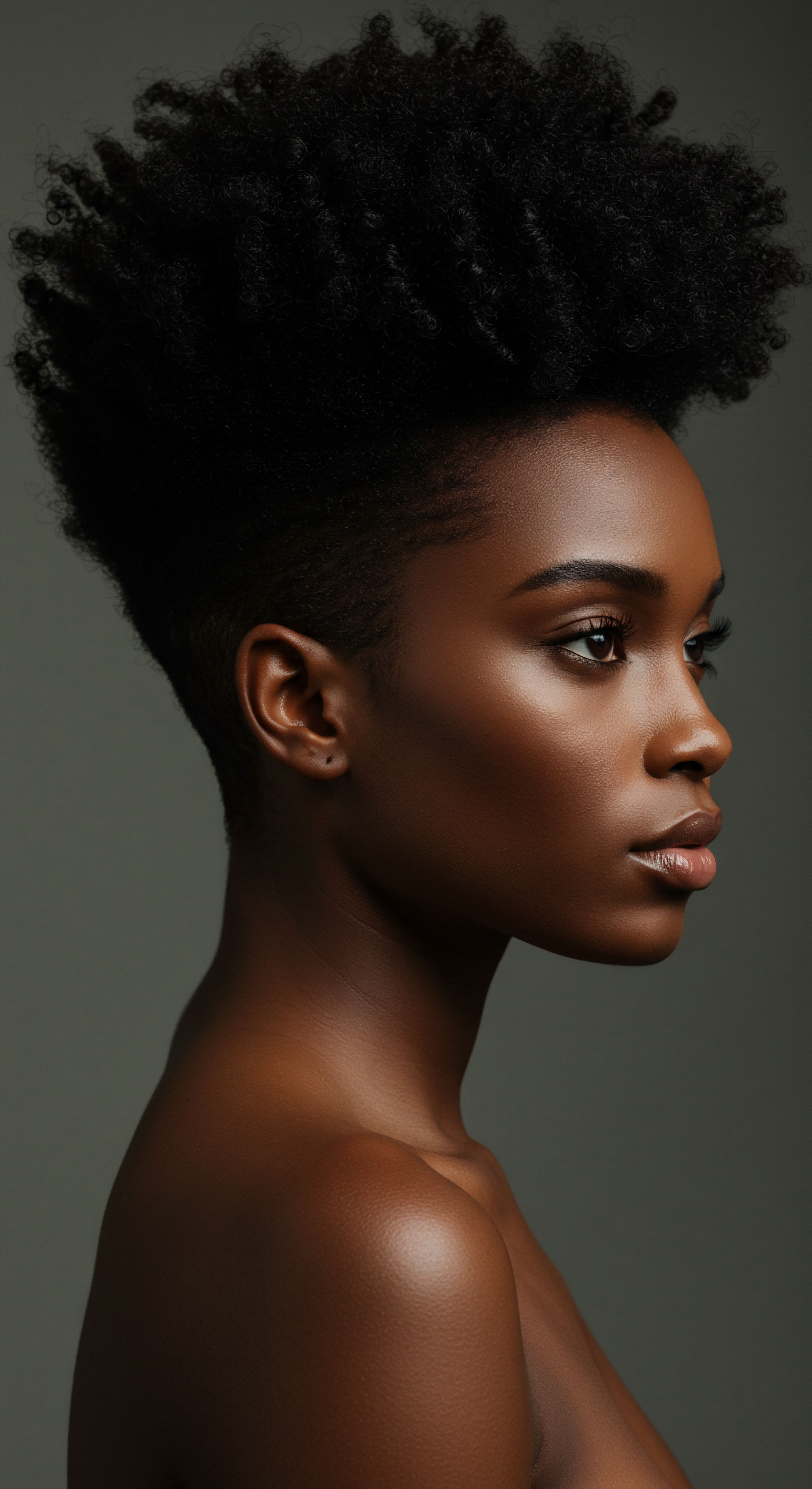
Are Disulfide Bonds Causative or Stabilizing in Curl Formation?
The role of disulfide bonds in curl formation is a topic of considerable scientific discussion. These strong, covalent bonds form between sulfur atoms in the amino acid cysteine, which is abundant in keratin. For a long time, it was commonly believed that the sheer number of disulfide bonds directly caused hair to curl. Indeed, permanent waving and relaxing treatments work by breaking and reforming these bonds to alter hair shape.
However, contemporary research offers a more nuanced perspective. While disulfide bonds are undeniably critical for stabilizing the hair’s shape once it has formed, they are likely not the primary cause of the initial curl. Instead, their formation occurs during the keratinization process, after the cortical cells have already matured and the hair’s curvature has been largely established by the follicle’s shape and the asymmetrical distribution of cortical cells.
Disulfide bonds, along with other cross-links, then serve to lock this pre-determined curvature into place, providing the hair with its remarkable strength and resilience. This distinction is significant ❉ the bonds do not initiate the curl, but rather preserve it, making the curl a more permanent feature.

Genetic Blueprints and Their Epigenetic Overlays
The blueprint for curl patterns is deeply etched within our genetics. Genome-wide association studies (GWAS) have identified several genes linked to variations in human scalp hair fiber shape across different ethnic groups. One particularly significant gene is Trichohyalin (TCHH), which plays a role in the cross-linking of keratin filaments within the hair follicle.
Variants of the TCHH gene are strongly associated with hair curl and morphology variations, particularly in populations of European ancestry. For instance, a 2009 study identified a genetic variant in the TCHH gene responsible for approximately 6% of the variance in curly, wavy, and straight hair within European populations.
Beyond TCHH, other genes such as EDAR and KRT74, and a copper transporter protein CUTC, have also been implicated in influencing hair texture. The interplay among these multiple genes, each with its own variants, creates the vast spectrum of hair textures observed globally. This complex genetic inheritance explains why curl patterns can be so diverse, even within families, and why simple dominant/recessive models often fall short in explaining the full reality of hair texture.
The conversation extends further into the realm of epigenetics, a fascinating field that explores how environmental factors and lifestyle choices can influence gene expression without altering the underlying DNA sequence. While our genetic makeup provides the fundamental instructions for hair formation, epigenetic modifications can subtly adjust how these instructions are read and translated. This means that factors like diet, stress, and even chemical exposures can influence the activity levels of genes related to hair growth and texture.
The intricate dance of genetics and epigenetics orchestrates the formation of curl, with follicular shape and protein distribution playing central roles.
This epigenetic layer adds another dimension to our understanding of curl. For example, some individuals might experience changes in their hair texture over time, perhaps noticing a shift from straight to wavy or curly hair. While less common, such changes can sometimes be attributed to epigenetic shifts, where certain genes related to hair morphology are activated or silenced due to internal or external influences. This highlights the dynamic nature of hair and its susceptibility to factors beyond our inherited DNA.
| Gene/Protein Trichohyalin (TCHH) |
| Role in Curl Formation Involved in cross-linking keratin filaments; variations linked to curl in European populations. |
| Research Context Identified in GWAS studies, accounting for a percentage of curl variance. |
| Gene/Protein Keratin Proteins (KPs) |
| Role in Curl Formation Major structural components of hair; uneven distribution and specific types influence curl. |
| Research Context Proteomic studies reveal differing levels of KPs in curly vs. straight hair. |
| Gene/Protein Cortical Cell Types (Ortho/Para) |
| Role in Curl Formation Differential lengths and distribution create internal tension, leading to coiling. |
| Research Context Observed asymmetry in their arrangement correlates with hair curvature. |
| Gene/Protein Genetic and protein-level differences underpin the diversity of curl patterns. |
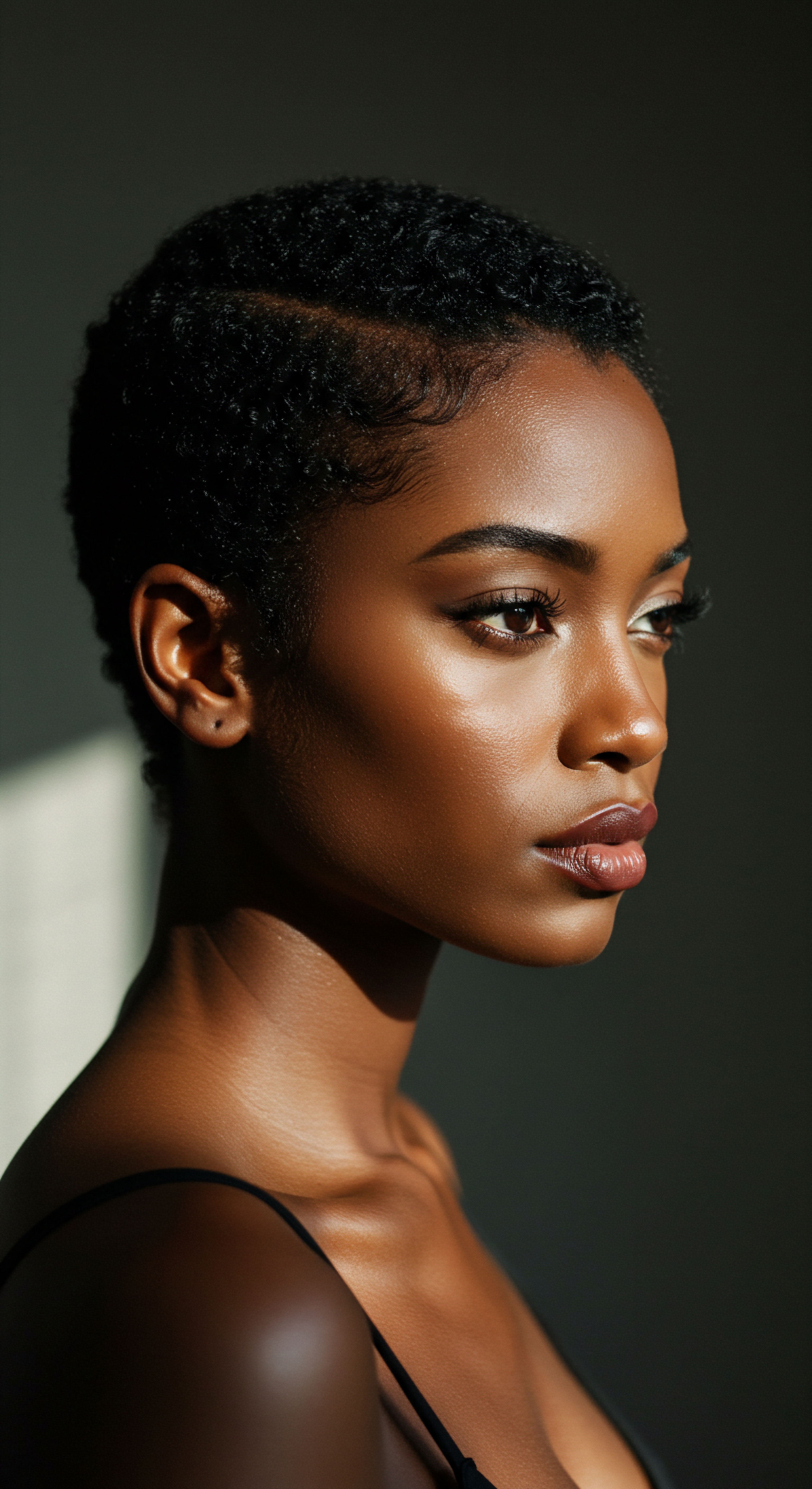
Microscopic Distinctions and Their Real-World Consequences
The microscopic distinctions within textured hair have tangible consequences for its physical properties and care requirements. The elliptical cross-section of curly hair, while giving it its distinctive shape, also means that the hair shaft is not uniform in diameter along its length. This irregularity, combined with the natural twists and turns of the curl, can lead to points where the cuticle layers are slightly more lifted or unevenly aligned.
This can result in textured hair feeling inherently rougher and appearing less shiny compared to straight hair, as its irregular surface scatters light differently. More significantly, these structural characteristics make textured hair more prone to tangling and breakage. The increased surface friction between individual strands, coupled with the potential for exposed inner structures at the bends of the curl, means that textured hair often requires greater care during detangling and styling to avoid mechanical damage.
Moreover, the natural coil of textured hair can impede the even distribution of natural oils (sebum) from the scalp down the hair shaft, contributing to a drier hair type. This inherent dryness, combined with the potential for lifted cuticles, makes textured hair more susceptible to moisture loss and humidity-induced frizz. When dry hair is exposed to high humidity, it can absorb water molecules, causing it to swell and lose its defined shape, leading to frizz. Conversely, in low humidity environments without adequate protection, textured hair can rapidly lose moisture, becoming brittle and prone to split ends.
A compelling, albeit controversial, point arises from research comparing protein composition in different hair types. A study conducted by Nexxus researchers, utilizing advanced mass spectrometry, found that the protein composition of curly and straight hair types was indeed different. Specifically, some proteins were present at levels up to six times greater in curly hair than in straight hair, while others were found at much lower levels. They identified around 20 proteins that showed significant differences in abundance between the two hair types.
This finding challenges the simpler notion that curl is solely a matter of keratin arrangement within the same protein set, suggesting instead that the very types and quantities of proteins can differ, influencing performance and care needs. This suggests a deeper biological distinction, rather than merely a physical reordering of identical components. The implications for targeted hair care formulations, focusing on specific protein needs, are profound.

Reflection
As we gently pull back from the intricate world of internal hair structures, we carry with us a profound appreciation for the silent, powerful forces that shape our textured strands. The journey through follicles, proteins, and genetic codes reveals that our curls are not merely a style choice or a fleeting trend, but a living testament to biological artistry and ancestral whispers. Each coil, each wave, is a story written in cellular precision and molecular bonds, inviting us to approach our hair not with struggle, but with reverence and informed tenderness. Understanding these unseen architects of curl empowers us to nurture our hair with deeper intention, celebrating its inherent vitality and the rich heritage it carries.
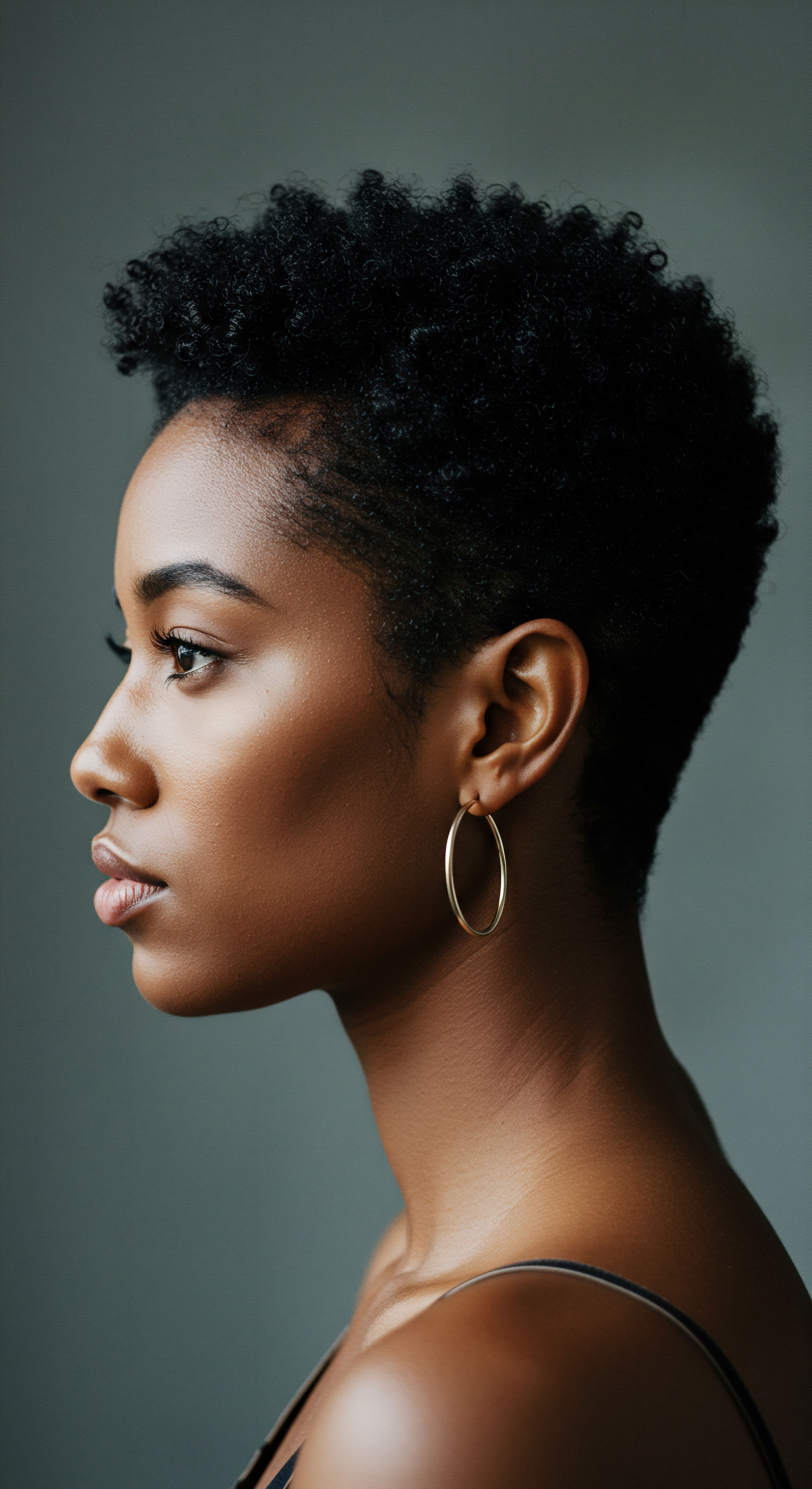
References
- The what, why and how of curly hair ❉ a review. Journal of Cosmetic Dermatology, 2019.
- The Genomic Variation in Textured Hair ❉ Implications in Developing a Holistic Hair Care Routine. MDPI, 2023.
- Curly Hair From Genes (GWAS) to Functional Genomics ❉ Wnt-Secreting and -Receiving Macrophages Orchestrate Hair Types. A Hypothesis with Functional Implications. Preprints.org, 2024.
- Curls Uncovered ❉ Embracing the Beauty and Science of Curly Hair. The University of Sydney, 2023.
- The Straight Scoop on Curly Hair. Practical Dermatology, 2021.
- The biology and genetics of curly hair. Experimental Dermatology, 2017.
- What is the difference between straight hair and curly hair? Reddit, 2016.
- Is Curly Hair Genetic? How DNA Affects Your Hair Type. Xcode Life, 2025.
- The Science Behind Curly Hair and How to Achieve Bouncy Curls. Vera Clinic, 2025.
- Nexxus Research on the Role of Protein in Very Curly vs. Very Straight Hair. Happi, 2021.
- DNA ❉ Nature’s curling iron? Helix, 2017.
- Hair Texture 101. DevaCurl, 2023.
- The structure of people’s hair. Interface Focus, 2014.
- Curly or straight ❉ What determines hair shape? Medical News Today, 2017.
- Why is hair curly?-Deductions from the structure and the biomechanics of the mature hair shaft. Experimental Dermatology, 2019.
- Why Hair Curls. Check That Hair Fact!, 2018.
- Biracial hair types ❉ What to know. Medical News Today, 2021.
- The Science Of Hair ❉ Cloud Nine’s Jargon Buster. Cloud Nine, 2023.
- How are straight and curly hair inherited? The Tech Interactive, 2004.
- Mixed Race Hair Really Is Different! Naturally Curly, 2013.
- The Biology and Genetics of Curly Hair. ResearchGate, 2021.
- The science behind wavy hair. The Oxford Scientist, 2024.
- Science Sunday – Chemistry of Curly Hair. The Chic Chemist, 2019.
- Hair | Biology for Majors II. Lumen Learning, 2023.
- Epigenetics and Hair Growth. Top Knot Extensions, 2023.
- TCHH – Trichohyalin – Homo sapiens (Human). UniProtKB, 2024.
- Trichohyalin. Wikipedia, 2024.
- Permanent Hair Wave. Chemistry LibreTexts, 2022.
- Science of Curly Hair. Redken US, 2015.
- Changing the shape of hair with keratin peptides. RSC Publishing Home, 2017.
- Why is hair curly? Deductions from the structure and the biomechanics of the mature hair shaft. ResearchGate, 2024.
- Proteins as Hair Styling Agents. ResearchGate, 2025.
- How do disulphide bonds in hair cause curling? Biology Stack Exchange, 2016.
- Learn the Science of Curly Hair. Paramount Beauty, 2015.
- Health improvement of human hair and their reshaping using recombinant keratin K31. Scientific Reports, 2018.
- The Science of Curly Hair Typing. CurlsBot, 2025.
- Application of keratin K31 in straightening curly hair. ResearchGate, 2018.
- Researchers find curly hair gene. QIMR Berghofer, 2009.